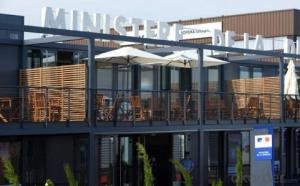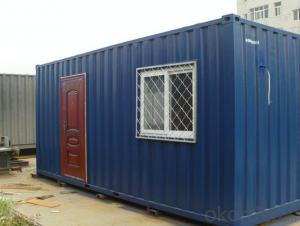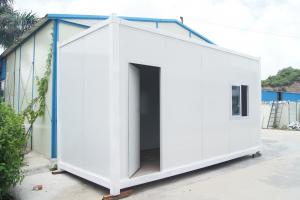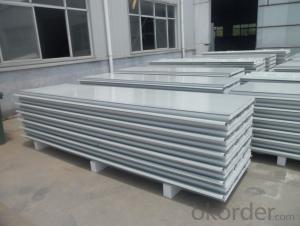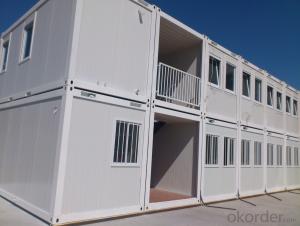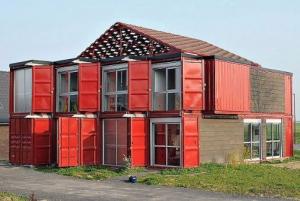High quality decorated container house for office
- Loading Port:
- China Main Port
- Payment Terms:
- TT OR LC
- Min Order Qty:
- -
- Supply Capability:
- -
OKorder Service Pledge
Quality Product, Order Online Tracking, Timely Delivery
OKorder Financial Service
Credit Rating, Credit Services, Credit Purchasing
You Might Also Like
High quality decorated container house for office
Specification

Production Process
Frame

Floor


roof
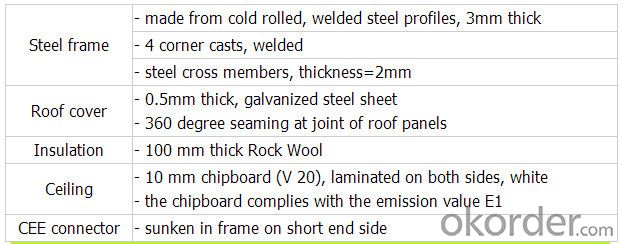
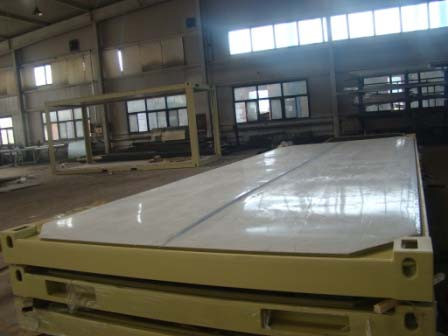
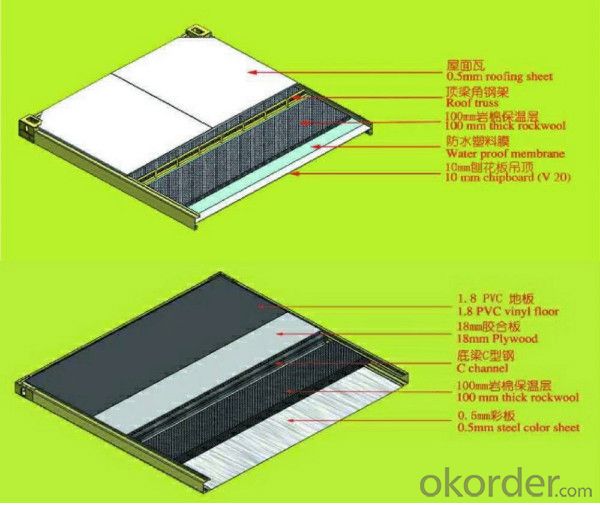
Window
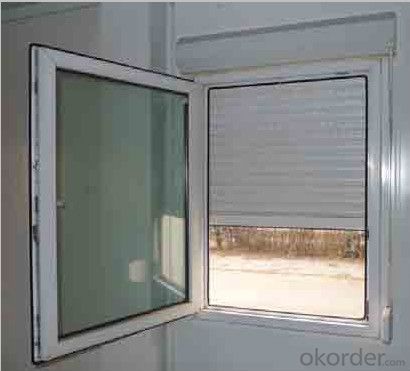
Door
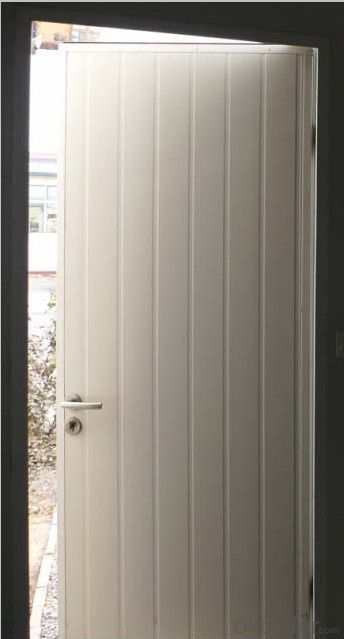
Layout


Application
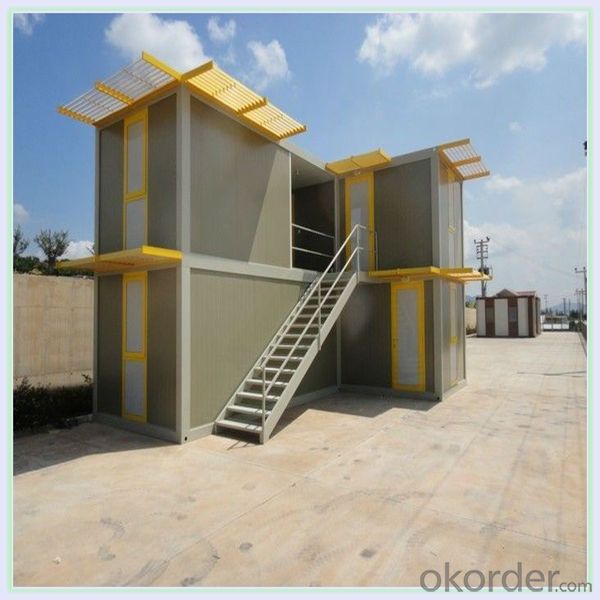
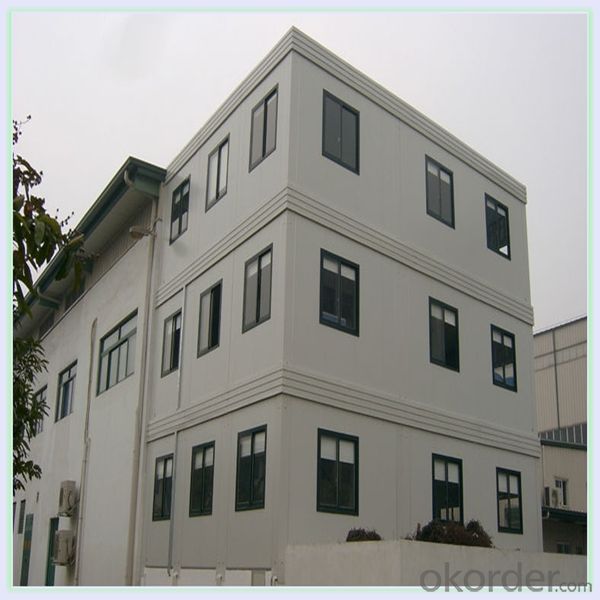
we also have prefab villa house
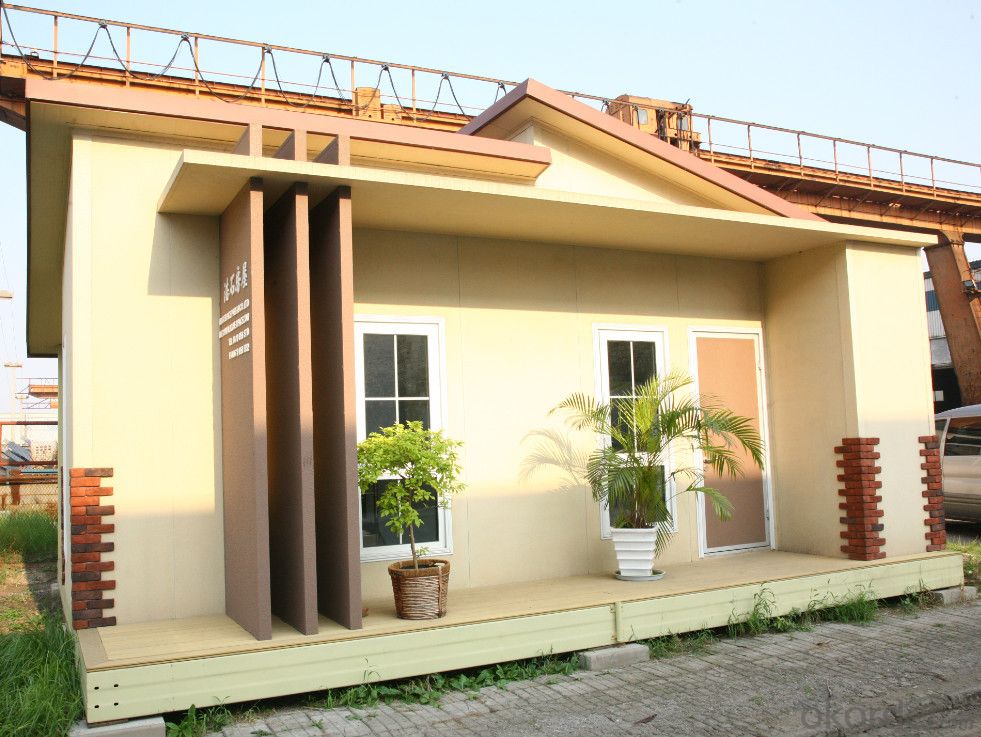
- Q:Can container houses be used for temporary housing solutions?
- Certainly, container houses can be utilized for temporary housing solutions without a doubt. Known as shipping container homes, container houses are growing in popularity due to their affordability, durability, and versatility. These structures are constructed from repurposed shipping containers, typically made of steel and designed to withstand harsh weather conditions and transportation. The mobility of container houses is one of their key advantages for temporary housing solutions. They can be easily transported and relocated to different sites, making them perfect for short-term housing needs. Setting up and dismantling them is quick, providing flexibility to meet various temporary housing requirements such as disaster relief, construction worker camps, refugee camps, or temporary workforce accommodations. Container houses can also be customized and modified to cater to specific temporary housing needs. They can be equipped with amenities like insulation, plumbing, electrical systems, heating and cooling, as well as furniture and fixtures, ensuring comfortable living conditions. Additionally, container houses can be stacked or combined to create larger living spaces or multi-unit structures, making them suitable for accommodating larger groups or families. Furthermore, container houses offer an environmentally friendly solution for temporary housing needs. By repurposing shipping containers, this housing option reduces waste and promotes sustainability. It also minimizes the demand for traditional construction materials and processes, resulting in a lower carbon footprint. While container houses may not provide the same level of comfort or aesthetic appeal as traditional houses, they offer a cost-effective and efficient solution for temporary housing needs. They have already proven successful in various temporary housing projects worldwide and continue to gain recognition as a viable option for addressing housing challenges during emergency situations or transitional periods.
- Q:Do container houses have plumbing and electrical systems?
- Yes, container houses can have plumbing and electrical systems incorporated into their design. They can be equipped with standard plumbing fixtures such as sinks, toilets, and showers, as well as electrical wiring for lighting, outlets, and appliances. However, the specific installation and configuration may vary depending on the design and customization of the container house.
- Q:Are container houses suitable for senior citizens?
- Yes, container houses can be suitable for senior citizens. Container houses offer several advantages that can make them a suitable option for older adults. Firstly, container houses can be designed to be accessible and senior-friendly. They can be built on a single level, eliminating the need for stairs or multiple floors, which can be difficult for seniors with mobility issues. Additionally, container houses can be customized with wider doorways and hallways to accommodate wheelchairs or walkers. Secondly, container houses can be easily modified to include features that cater to the specific needs of seniors. For example, grab bars can be installed in bathrooms and bedrooms to provide stability and prevent falls. Non-slip flooring can be used to minimize the risk of accidents. Moreover, container houses can be equipped with smart home technologies, such as automated lighting and temperature controls, making it more convenient for seniors to manage their living environment. Furthermore, container houses can be built in communities or developments specifically designed for senior living. These communities can offer amenities and services that cater to the needs of older adults, such as medical facilities, social activities, and transportation services. Living in a container house within such a community can provide seniors with a supportive and vibrant environment that promotes social interaction and overall well-being. Overall, container houses can be a suitable housing option for senior citizens. Their flexibility, customization possibilities, and potential for senior-friendly design make them a viable choice for older adults looking for a comfortable, accessible, and safe living space.
- Q:Can container houses be designed to have a meditation space?
- Yes, container houses can definitely be designed to have a meditation space. The modular nature of container houses allows for great flexibility in design, making it possible to create dedicated spaces for various purposes, including meditation. To design a meditation space in a container house, several factors should be considered. Firstly, it is important to choose a suitable container size that can accommodate the desired meditation area. Containers come in various sizes, so selecting a larger container or combining multiple containers can provide ample space for a comfortable meditation room. Next, the interior design of the meditation space should promote a calm and peaceful atmosphere. This can be achieved by incorporating elements such as soft lighting, natural materials, and a minimalist aesthetic. Creating a serene ambiance by using colors that promote relaxation, such as soothing blues or earthy tones, can enhance the meditation experience. Furthermore, proper insulation and soundproofing should be implemented to ensure a quiet and tranquil environment for meditation. This can be achieved through the installation of insulation materials and double-glazed windows to reduce outside noise and create a peaceful atmosphere within the container house. Additionally, incorporating elements of nature, such as indoor plants or a small indoor garden, can further enhance the meditation space. Natural elements have a calming effect and can help create a connection with the surroundings, promoting a deeper state of meditation. Overall, with careful planning and thoughtful design, container houses can be easily customized to include a dedicated meditation space. Whether it's a small corner or an entire room, container houses offer the versatility to create a peaceful sanctuary for meditation within a compact and sustainable living space.
- Q:Can container houses withstand natural disasters?
- Yes, container houses can withstand natural disasters. The use of durable steel containers as the primary building material makes them highly resistant to extreme weather conditions such as hurricanes, earthquakes, and wildfires. Additionally, these houses can be reinforced and designed with proper structural engineering to ensure their stability and safety during natural disasters.
- Q:Are container houses suitable for cultural centers?
- Container houses can indeed be suitable for cultural centers, depending on the specific needs and requirements of the center. Container houses offer several advantages that make them a viable option for such facilities. Firstly, container houses are highly flexible and adaptable. They can be easily modified and customized to meet the unique needs of a cultural center. The containers can be stacked and arranged in various configurations, allowing for different spaces such as exhibition halls, classrooms, meeting rooms, or performance areas. This flexibility enables cultural centers to maximize their available space and create a layout that suits their specific activities and functions. Secondly, container houses are cost-effective. They are often more affordable than traditional building methods, making them a great option for cultural centers that may have limited budgets. The construction and assembly of container houses are relatively quick and straightforward, resulting in lower labor costs. Additionally, due to their modular nature, container houses can be expanded or reduced in size as needed, allowing cultural centers to grow or downsize without major construction costs. Furthermore, container houses are eco-friendly. By repurposing shipping containers, cultural centers can contribute to sustainability efforts by reducing waste and minimizing the use of raw materials. Additionally, container houses can be equipped with energy-efficient systems, such as solar panels or rainwater harvesting, further reducing their environmental impact. However, it is important to consider the specific requirements of the cultural center when opting for container houses. For instance, certain cultural centers may require larger spaces or architectural features that may not be easily achievable with container houses. In such cases, a combination of container houses and traditional construction methods could be considered to meet these needs. In conclusion, container houses can be suitable for cultural centers due to their flexibility, cost-effectiveness, and eco-friendly nature. They offer a unique and customizable solution that can meet the diverse needs of cultural centers while also contributing to sustainability efforts. However, careful assessment of the specific requirements of the cultural center is necessary to ensure that container houses are the right fit.
- Q:Are container houses prone to pests and insects?
- If proper precautions are not taken, container houses, like any other type of housing, can become susceptible to pests and insects. However, by taking the right preventative measures and regularly maintaining the house, the risk can be reduced. One advantage of container houses is their tightly sealed structure, which makes it more challenging for pests and insects to enter compared to traditional houses. Nevertheless, it's essential to be aware that pests can still find their way in through small openings, such as gaps around windows or doors, or through vents and pipes. It is, therefore, crucial to inspect these potential entry points and seal them properly. Another factor that can contribute to pest problems in container houses is the surrounding environment. If the house is situated in an area with high pest activity, such as near a wooded area or an agricultural field, the likelihood of pests infiltrating the house may be higher. In such cases, regular landscaping and pest control measures, such as maintaining a clean and debris-free area, trimming bushes and trees away from the house, and using suitable insecticides, can help minimize the risk of infestations. Additionally, proper storage and cleanliness inside the house are vital to prevent attracting pests. It is important to store food in airtight containers to avoid attracting insects and rodents. Regular cleaning and timely removal of trash are also crucial in preventing pests from finding a source of food. In conclusion, while container houses are not inherently more prone to pests and insects than traditional houses, it is crucial to take the necessary precautions to minimize the risk. Regular maintenance, proper sealing of potential entry points, implementing pest control measures, and maintaining cleanliness are all key factors in keeping pests and insects away from container houses.
- Q:Can container houses be designed with a double-height ceiling or mezzanine level?
- Container houses have the potential to incorporate a double-height ceiling or mezzanine level into their design. The versatility and adaptability of container houses offer a range of design possibilities. With careful planning and consideration of the structure, container houses can be modified to accommodate a double-height ceiling or mezzanine level. Opting for a double-height ceiling can create a sense of spaciousness and openness within a container house. By eliminating the ceiling of one container and connecting it to the floor of another container, the space between the two containers can be expanded, resulting in a taller and visually appealing living area. This design choice maximizes natural light and ventilation, providing a larger and more comfortable interior. Similarly, container houses can incorporate a mezzanine level into their design. A mezzanine is a partial floor situated between the main floor and the ceiling. It can be utilized to create additional living space, such as a loft area for a bedroom or a study. Constructing mezzanines in container houses requires the use of steel framing or other suitable materials to ensure structural integrity. When considering a double-height ceiling or mezzanine level, it is crucial to take into account the weight-bearing capacity of the containers and the necessary structural modifications. Consulting a professional architect or structural engineer is highly recommended to guarantee the safety and stability of the container house design. In conclusion, container houses offer the opportunity to incorporate a double-height ceiling or mezzanine level. These design options enhance the uniqueness and functionality of container houses, making them an attractive choice for those seeking innovative and adaptable housing solutions.
- Q:Can container houses be designed to have a small backyard or garden space?
- Yes, container houses can be designed to have a small backyard or garden space. With careful planning and creative design, containers can be arranged in a way that leaves room for a backyard or garden area. Additionally, container houses can incorporate features like rooftop gardens, vertical gardens, or even hanging gardens to maximize green space in a limited area.
- Q:Can container houses be designed with a walk-in closet or dressing room?
- Yes, container houses can definitely be designed with a walk-in closet or dressing room. The modular nature of container homes allows for versatile and customizable layouts, making it possible to include various amenities such as walk-in closets or dressing rooms based on the homeowner's preferences and needs.
1. Manufacturer Overview |
|
|---|---|
| Location | |
| Year Established | |
| Annual Output Value | |
| Main Markets | |
| Company Certifications | |
2. Manufacturer Certificates |
|
|---|---|
| a) Certification Name | |
| Range | |
| Reference | |
| Validity Period | |
3. Manufacturer Capability |
|
|---|---|
| a)Trade Capacity | |
| Nearest Port | |
| Export Percentage | |
| No.of Employees in Trade Department | |
| Language Spoken: | |
| b)Factory Information | |
| Factory Size: | |
| No. of Production Lines | |
| Contract Manufacturing | |
| Product Price Range | |
Send your message to us
High quality decorated container house for office
- Loading Port:
- China Main Port
- Payment Terms:
- TT OR LC
- Min Order Qty:
- -
- Supply Capability:
- -
OKorder Service Pledge
Quality Product, Order Online Tracking, Timely Delivery
OKorder Financial Service
Credit Rating, Credit Services, Credit Purchasing
Similar products
New products
Hot products
Related keywords
